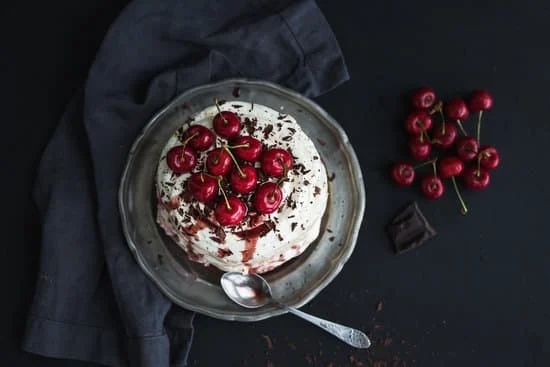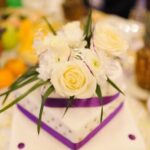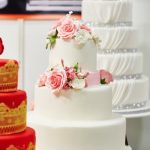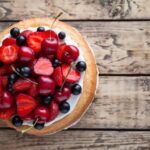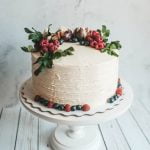Are you looking to take your cake decorating skills to the next level? Dive into the world of chocolate decoration ideas for cakes and elevate your creations with stunning edible designs. From simple yet elegant chocolate curls to intricate piping techniques, there are endless possibilities to make your cakes stand out.
Working with chocolate can seem daunting, but understanding the basics is fundamental. From knowing the different types of chocolate to getting the temperatures just right, mastering these elements will set the foundation for creating beautiful decorations. Whether you’re a beginner or a seasoned baker, there’s always something new to learn when it comes to chocolate decorating.
In this article, we will delve into various techniques such as creating stunning chocolate curls and shavings, using molds and stencils for intricate designs, incorporating edible flowers and fruits, and mastering the art of piping chocolate. With a combination of different types of chocolate and some expert tips and tricks, you’ll be on your way to creating professional-looking chocolate masterpieces that will impress anyone who lays eyes on your delicious creations.
The Basics of Working With Chocolate
When it comes to creating beautiful chocolate decorations for cakes, understanding the basics of working with chocolate is essential. From choosing the right type of chocolate to mastering the proper temperatures and techniques, these factors can greatly impact the outcome of your creations.
Types of Chocolate
There are several types of chocolate that can be used for decorating cakes, including dark chocolate, milk chocolate, white chocolate, and compound chocolate. Each type has its own unique flavor profile and melting properties, so it’s important to choose the one that best suits your design needs. Dark chocolate is often preferred for its rich flavor, while white chocolate adds a creamy sweetness to decorations.
Temperatures and Techniques
One key aspect of working with chocolate is tempering, which involves heating and cooling the chocolate to specific temperatures in order to achieve a smooth and glossy finish. Proper tempering prevents the formation of dull spots or streaks on your decorations.
Techniques such as double boiling or using a microwave can be used to melt the chocolate gently without burning it. Additionally, using parchment paper or acetate sheets for spreading melted chocolate thinly can result in delicate decorations like lace patterns or intricate designs.
Storage and Handling
Proper storage and handling are crucial when working with chocolate for cake decorations. Chocolate should be stored in a cool, dry place away from direct sunlight and strong odors to prevent it from melting or absorbing unwanted flavors.
When handling melted chocolate, avoid introducing any moisture as this can cause the chocolate to seize up and become unusable. By understanding these basics of working with chocolate, you can elevate your cake decorating skills and create stunning edible masterpieces that will impress your friends and family.
Creating Stunning Chocolate Curls and Shavings for Cake Toppings
Chocolate curls and shavings are a classic yet elegant way to decorate cakes with a touch of sophistication. These delicate chocolate decorations not only add visual appeal but also provide a satisfying texture contrast to your cake. Here are some tips on creating stunning chocolate curls and shavings for your cake toppings:
- Start by selecting high-quality chocolate that is specifically designed for melting and tempering. Dark, milk, or white chocolate can be used depending on your preference.
- Using a sharp vegetable peeler or a specialized chocolate curler, carefully shave thin strips of chocolate from a bar at room temperature. It’s crucial to work quickly before the chocolate starts to melt in your hands.
- To create perfect curls, gently push the blade of the peeler along the flat side of the chocolate, allowing it to naturally curl into beautiful shapes. Alternatively, you can use a spiralizer tool for longer, more intricate curls.
Incorporating chocolate curls and shavings on top of your cakes can instantly elevate their presentation from ordinary to extraordinary. Whether you’re decorating a birthday cake, wedding cake, or any other special occasion confection, these simple yet artistic chocolate decorations will surely impress your guests and satisfy their sweet tooth cravings. Next time you’re baking a cake, consider using chocolate curls and shavings as an elegant finishing touch that will take your dessert creation to the next level.
Using Molds and Stencils to Make Intricate Chocolate Designs
Using molds and stencils to create intricate chocolate designs is a fantastic way to elevate the visual appeal of your cakes. Molds come in various shapes and sizes, allowing you to craft detailed chocolate embellishments with precision. Whether you want to make delicate flowers, geometric patterns, or whimsical shapes, molds offer a convenient method for replicating intricate designs.
When working with molds for chocolate decoration ideas for cakes, it is crucial to temper your chocolate properly to ensure a smooth finish and clean release from the mold. By tempering your chocolate, you can achieve a glossy sheen and a satisfying snap upon biting into the finished product.
This process involves melting the chocolate, then cooling it while stirring to stabilize its crystalline structure. Once tempered, the chocolate can be poured into molds and set in the refrigerator until firm.
Stencils are another valuable tool for creating elaborate designs on cakes with chocolate. Simply place a stencil over your cake or dessert canvas and dust cocoa powder or powdered sugar over it for an elegant finishing touch.
For more intricate designs, you can use melted chocolate in a piping bag to trace over the stencil onto the cake surface. This technique allows you to customize your decorations according to the theme or occasion of your cake, adding a personal touch that will surely impress your guests.
| Chocolate Decoration Technique | Tips for Success |
|---|---|
| Using Chocolate Molds | Properly temper chocolate before pouring into molds for a professional finish. |
| Stenciling with Chocolate | Dust cocoa powder over stencils or use melted chocolate in a piping bag for precise designs. |
Incorporating Edible Flowers and Fruits With Chocolate Decorations
Chocolate decorations for cakes are versatile and can be taken to the next level by incorporating edible flowers and fruits. Not only do these additions bring a pop of color to your dessert, but they also add a fresh and natural element that complements the richness of chocolate. When choosing edible flowers, it is essential to ensure they are pesticide-free and safe for consumption.
One way to combine edible flowers with chocolate decorations is by delicately placing them on top of a frosted cake. The vibrant colors of flowers such as pansies, lavender, or roses can contrast beautifully against the dark hues of chocolate. Additionally, using a brush to lightly dust the petals with edible glitter or pearl dust can enhance their appearance and make them even more eye-catching.
Incorporating fruits like berries, citrus slices, or even dried fruits can also elevate the overall look of chocolate decorations on cakes. These fruits not only add a burst of flavor but also provide a refreshing contrast to the sweetness of chocolate. For example, topping a chocolate ganache cake with fresh raspberries or garnishing a flourless chocolate torte with candied orange slices can create visually stunning desserts that are as delicious as they are beautiful.
| Edible Flowers to Consider | Recommended Fruits for Chocolate Decorations |
|---|---|
| Roses | Berries (Strawberries, Blueberries) |
| Lavender | Citrus Slices (Oranges, Lemons) |
| Pansies | Dried Fruits (Apricots, Figs) |
How to Master the Technique of Piping Chocolate for Intricate Designs
Choosing the Right Chocolate for Piping
When it comes to piping chocolate for intricate designs on cakes, it’s crucial to select the right type of chocolate. It’s recommended to use either couverture chocolate or tempered chocolate for piping, as they have a higher cocoa butter content, which makes them more fluid and easier to work with. Avoid using compound chocolate, as it may not set properly and can result in a dull finish.
Techniques for Piping Chocolate
To master the technique of piping chocolate for intricate designs, you’ll need a parchment paper cone or a piping bag fitted with a small round tip. Start by melting the chocolate gently in a double boiler or microwave, being careful not to overheat it. Once the chocolate is smooth and fluid, fill your parchment paper cone or piping bag with the melted chocolate and twist the end to secure it.
Begin piping your desired design onto a baking sheet or directly onto your cake. Remember to apply even pressure while piping and keep a steady hand for precise lines. Experiment with different tip sizes and shapes to create various patterns and decorations.
Troubleshooting Tips for Piping Chocolate
If you encounter issues while piping chocolate, such as the chocolate becoming too thick or setting too quickly, you can try adding a small amount of cocoa butter to thin it out. Alternatively, if the chocolate becomes too runny, you can allow it to cool slightly before continuing to pipe. Practice makes perfect when it comes to mastering the technique of piping chocolate for intricate designs, so don’t be discouraged if your first attempts are not picture-perfect.
Combining Different Types of Chocolate for a Multi-Dimensional Cake Decoration
Chocolate decorations are a versatile and delicious way to elevate the appearance of a cake. One way to create stunning and multi-dimensional chocolate decorations is by combining different types of chocolate. By mixing various chocolates, you can add depth, texture, and visual interest to your cake design. Here are some ideas on how to effectively combine different types of chocolate for your next cake decoration:
- Dark Chocolate: Known for its rich and intense flavor, dark chocolate is a popular choice for creating contrast in chocolate decorations. Use dark chocolate curls or shavings to add bold accents to your cake.
- White Chocolate: White chocolate has a creamy and sweet taste that pairs well with other flavors. Consider drizzling melted white chocolate over dark chocolate decorations to create a striking marble effect on your cake.
- Milk Chocolate: With its smooth and mellow flavor, milk chocolate can be used to soften the intensity of dark chocolate decorations. Mix milk chocolate ganache with dark chocolate piping for a balanced and harmonious look on your cake.
When combining different types of chocolate for cake decorations, it’s important to consider the flavor profiles of each variety and how they will interact with one another. Experiment with various combinations to find the perfect balance of taste and aesthetics for your masterpiece. By incorporating different types of chocolate into your cake decorations, you can create visually stunning designs that will impress your guests and showcase your creativity.
Tips and Tricks for Achieving Professional-Looking Chocolate Decorations
Working with chocolate for cake decorations can be a delightful and rewarding experience, but it also requires attention to detail and precision. To achieve professional-looking results, there are several tips and tricks that can help elevate your chocolate decorations to the next level.
One key tip is to make sure you are working with high-quality chocolate that is specifically designed for decorating purposes. Using chocolate that has a higher cocoa butter content will result in smoother and shinier finishes, enhancing the overall look of your cake.
Another important aspect to consider when working with chocolate decorations is the temperature at which you work with the chocolate. It is crucial to temper your chocolate properly to ensure that it sets correctly and maintains its glossy appearance. This involves melting the chocolate, then cooling it down slightly before warming it up again to a specific temperature range. By following proper tempering techniques, you can prevent your chocolate from blooming or becoming dull, resulting in a more professional finish.
In addition to using high-quality chocolate and proper tempering techniques, mastering the art of handling piping bags is essential for achieving intricate designs on your cakes. Practice piping different shapes and patterns on parchment paper before moving onto your actual cake to gain confidence and control over the process.
Keep in mind that consistency in pressure and speed while piping will help you create clean lines and shapes. By incorporating these tips and tricks into your chocolate decoration process, you can take your cake decorating skills to new heights and impress everyone with stunning creations featuring intricate chocolate designs.
Conclusion
In conclusion, mastering the art of chocolate decoration for cakes opens up a world of endless possibilities in creating stunning and delicious treats. From intricate designs using molds and stencils to the delicate technique of piping chocolate for detailed patterns, there are numerous ways to elevate your cake decorating skills with chocolate masterpieces. By incorporating edible flowers and fruits with chocolate decorations, you can bring a touch of freshness and color to your creations, adding both beauty and flavor.
Experimenting with different types of chocolate, whether dark, milk, or white, can add depth and richness to your cake decorations. Combining these varieties can create multi-dimensional effects that will not only impress visually but also delight the taste buds. Additionally, learning the basics of working with chocolate – including understanding temperatures and techniques – is essential for achieving professional-looking results that will truly wow your friends and family.
As you continue to explore and practice the various chocolate decoration ideas for cakes discussed in this article, remember that patience and precision are key. With dedication and a creative flair, you can turn any ordinary cake into a work of art that showcases your newfound skills and passion for chocolate decorating. So go ahead, unleash your creativity, and watch as your cakes transform into delectable masterpieces that will be the talk of any celebration.
Frequently Asked Questions
How to Decorate a Cake With Chocolates?
Decorating a cake with chocolates can be a fun and delicious way to add a special touch to your dessert. One popular method is to shave or grate chocolate into curls or shavings, then sprinkle them over the top of the cake. You can also use chocolate chips, chunks, or even chocolate-covered nuts for a more textured decoration.
Which Chocolate Is Good for Cake Decorating?
When it comes to choosing the best chocolate for cake decorating, the key is to select high-quality chocolate that melts easily and has a smooth texture. Dark chocolate, semi-sweet chocolate, or white chocolate are all excellent choices depending on the flavor profile you want to achieve.
Just make sure to use real chocolate instead of imitation products for the best results.
What to Use for Chocolate Decorations?
There are various tools and techniques you can use for creating beautiful chocolate decorations for your cakes. For instance, you can melt chocolate and pour it into molds to create intricate shapes like flowers, hearts, or geometric designs.
Another option is to dip fruits like strawberries or cherries in melted chocolate and let them set before placing them on top of the cake as decorations. Additionally, using a piping bag to drizzle melted chocolate in decorative patterns is another simple yet effective way to elevate the look of your cake.

Welcome to our cake decorating blog! My name is Destiny Flores, and I am the proud owner of a cake decorating business named Cake Karma. Our mission is to provide delicious, beautiful cakes for all occasions. We specialize in creating custom cakes that are tailored specifically to each customer’s individual needs and tastes.

